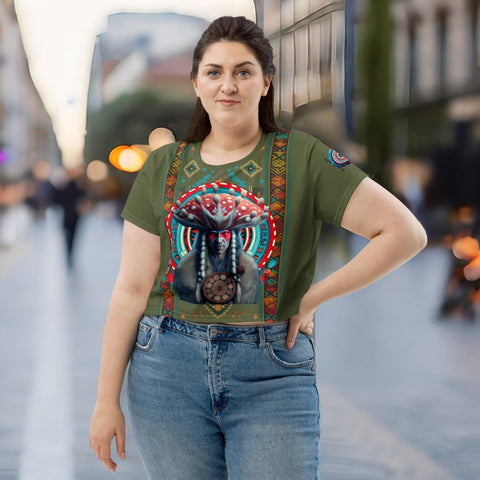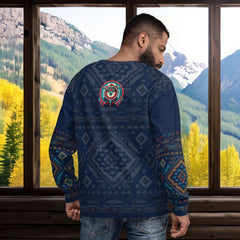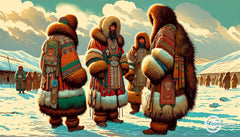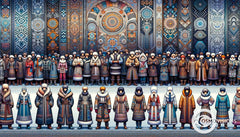The Unique Culture And Traditions Of The Yakut People
Posted by Massimiliano Geraci
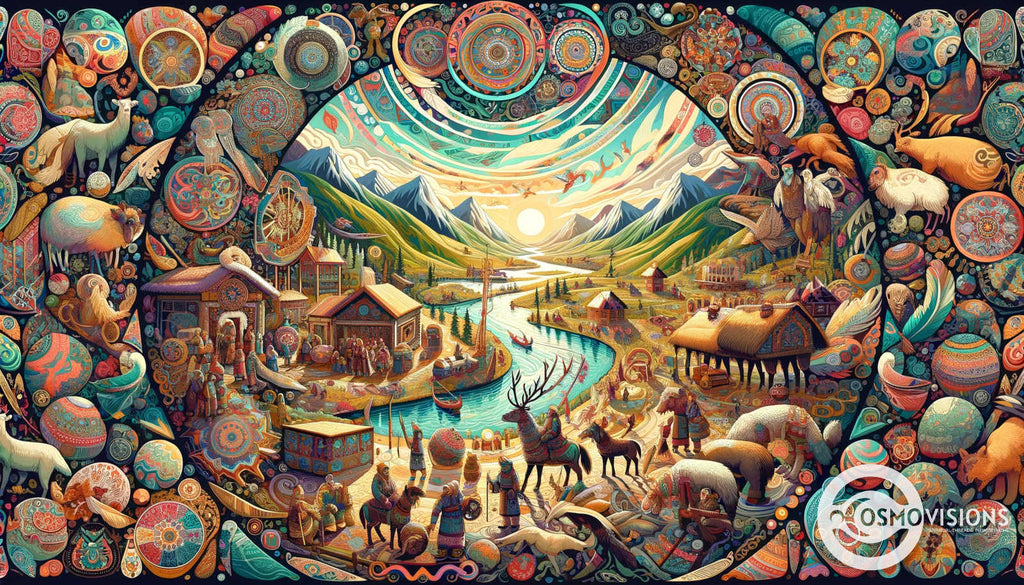
Embarking on a journey into the heart of Siberia, one discovers the vibrant tapestry of indigenous cultures that thrive amidst its vast landscapes. The Yakut people, an ethnic group with deep-rooted traditions and a rich heritage, are often shrouded in mystery to outsiders.
If you've ever been curious about how societies adapt their way of life to some of Earth's most extreme conditions or simply yearn for a deeper understanding of world cultures, then uncovering the customs of the Yakut may offer enlightening insights.
The Republic of Sakha, home to the majority of Yakuts, is characterized by subarctic temperatures that have not only tested but also shaped this resilient community. This blog post sheds light on how exactly their unique culture and age-old traditions enable them to flourish where few others dare to settle.
From ancient rituals whispered through generations to culinary delights born from necessity and creativity – every facet offers clues to surviving and thriving against all odds.
As we delve further into their captivating story, you'll discover solutions embedded within centuries-old wisdom applicable even today. Ready for an enchanting cultural immersion? Let's unveil the legacy together!

Unveiling the Origins of the Yakut People
Delve into the enigmatic beginnings of the Yakut people, where scholars have pieced together a narrative from the tapestry of history and folklore, centered around the majestic Lake Baikal.
This gateway will unfold the rich past that has shaped an indigenous population distinct in its customs and resilience throughout generations.
Early scholarship and theories
Scholars have long debated the roots of the Yakut people, with some tracing their lineage to ancient populations like the Tiele and Khori Buryats. These early theories bring together elements from different tribal ancestries, painting a picture of a rich cultural tapestry.
Evidence suggests that tribes such as the Khakas and Buryats, escaping the Mongolian Empire's reach, converged in the Altai-Sayan region and along the Lena River – giving rise to what we now know as Yakut society.
Anthropological research points to connections between Yakuts and prehistoric communities near Lake Baikal. The Ymyyakhtakh culture from this area seems particularly influential in shaping modern-day Sakha identity.
Toponymic data further supports these findings, suggesting that diverse ethnic influences merged over centuries to form today’s unique Yakut population. This complex origin story is reflected in their language, genetic makeup, and enduring customs passed down through generations.
The significance of Lake Baikal in Yakut history
Lake Baikal holds a place of deep cultural and historical importance for the Yakut people. It is here that their ancestry begins, marking Lake Baikal not merely as a geographical feature but also as an origin point for a vibrant culture steeped in tradition.
The journey from these ancient shores to the rich river valleys of Middle Lena, Aldan, and Vilyuy shaped the very essence of Yakut society. This migration led them to develop skills in hunting, fishing, reindeer herding, horse raising – all pillars supporting the robust heritage that stands today.
The significance attributed to Lake Baikal weaves through every facet of Yakut life; it's almost palpable in their art, spirituality and daily customs. An understanding of this connection offers valuable insight into how enduring bonds with nature can define an entire community’s identity and traditions over centuries.
Let us now delve into the historical journey of the Yakuts which will paint a clearer picture of how they carved out their existence amidst Siberia's demanding environs.

The Historical Journey of the Yakuts
The Yakuts' odyssey through time weaves a complex narrative of resilience and transformation, as they navigated the sweeping tides of change from the rule of Imperial Russia to today's Russian Federation.
Their saga is marked by endurance and adaptation in the face of historical upheavals including the Russian Civil War and decades under Soviet power, each era leaving indelible imprints on their cultural identity.
From Imperial Russia to the Russian Federation
Throughout the sweeping changes of history, the Yakut people have adapted and thrived from their time under Imperial Russia to life in the contemporary Russian Federation. They witnessed their homeland evolve through monumental political shifts, including the tumult of the Russian Civil War and decades under Soviet rule.
This resilience has ensured that Yakut culture remains a vibrant thread in the fabric of Siberia's diverse heritage.
Their story is not merely one of survival but also one of remarkable cultural preservation amidst these revolutions. Under each successive government, from tsars to general secretaries to presidents, Yakut traditions have persisted and transformed.
With an estimated population near half a million today, they maintain a distinct identity within Russia's vast tapestry, illustrating how indigenous populations can endure national transitions while holding steadfastly to their roots.
The impact of the Russian Civil War and the Soviet Union period
The Russian Civil War brought profound turmoil to the Yakut people, culminating in a revolt against the Red Army. This last conflict, known as the Yakut Revolt and led by Cornet Mikhail Korobeinikov, marked a period of significant struggle for autonomy in their history.
Amidst this chaos, the rich cultural tapestry of the Yakuts faced threats as they fought to preserve their traditions and way of life.
During Stalin's reign over the Soviet Union, policies such as collectivization devastated many indigenous populations including the Yakuts. The population declined sharply due to these aggressive campaigns in agriculture and reorganization of land from late 1920s through late 1930s.
Recovery began much later, around 1972 after years under Soviet policy that aimed at restructuring society but often overlooked or undermined indigenous cultures like that of the Sakha Republic inhabitants.
These events have shaped contemporary Yakut identity and influence how they maintain and adapt their heritage today.

The Rich Tapestry of Yakut Culture
Immerse yourself in the distinctive tapestry of Yakut culture, where ancient customs and contemporary life blend seamlessly against a backdrop defined by an extreme climate. Discover how this resilient community preserves its unique heritage while adapting to modernity, reflecting a proud history that continues to echo through their language, cuisine, and daily rituals.
The role of climate in shaping traditions
The bitter cold of Eastern Siberia forges the resilient spirit of the Yakut people. Sub-zero temperatures and permafrost make farming almost impossible, shaping a culture that thrives on animal husbandry and mining.
The inhospitable climate dictates their dress; layers of fur and skins are not just traditional attire but necessary armor against the relentless freeze.
Their legends teem with reverence for the natural world, mirroring the stark expanses they inhabit. Semi-nomadic by necessity, their rituals echo a deep connection to a land where survival hinges on respect for harsh weather patterns.
Even food is sculpted by climate—a diet rich in dairy products like reindeer milk emerges as a direct response to environmental demands, while dishes like stroganina reflect ingenuity in using what's readily available from the icy tundra.
Unique aspects of Yakut cuisine
Harsh winters and a nomadic heritage have carved out a distinct culinary path for the Yakut people. Their cuisine is a testament to resilience, featuring robust ingredients that can withstand the extreme cold of Siberia.
Dishes like stroganina cut through frozen silence with its thinly sliced salted fish, savored straight from the ice. It's not just about survival; it’s a celebration of texture and flavor honed over generations.
Yakut cooks transform simple staples into hearty meals that echo their connection with nature. Salamat—a warm embrace in the form of millet porridge—is enriched with butter and horse fat, providing energy and comfort during bone-chilling days.
Kumis, made from fermented mare's milk, weaves tradition into every sip, resonating deeply within Sakha culture as both sustenance and symbol of their spiritual relationship with the herds they raise.
Preservation of the Yakut language
Efforts to keep the Yakut language alive are essential for maintaining the cultural heritage of the Sakha people. Currently, a robust 87% of Yakuts in the Sakha Republic can speak their native tongue fluently, showcasing a commitment to linguistic preservation amidst modern influences.
The Siberian Turkic language thrives through local education programs, dedicated media broadcasts in both rural and urban areas, and cultural festivals that celebrate traditional stories and songs.
This steadfast dedication ensures that future generations inherit a living connection to their ancestral roots.
Cultural initiatives also make sure that this rich linguistic tradition continues through translations of world literature into Yakutian, providing an expansive lexical domain for speakers.
Engaging young minds with technology has led to apps and online resources aiding in learning and using the language daily. These efforts show how indigenous knowledge persists in today's digital age as an act of resilience and pride for not just linguists but all who cherish diversity.
Transitioning smoothly from preserving languages to cherishing art forms moves us into exploring "The Arts and Expressions of the Yakut People".

The Arts and Expressions of the Yakut People
Immerse yourself in the vibrant arts and expressions of the Yakut people, where traditional storytelling collides with contemporary creativity. Explore a world rich with cultural heritage as we delve into how the Yakuts channel their unique northern spirituality and historical experiences into captivating cinema, evocative literature, and mesmerizing music that transcends Siberian borders.
Contributions to cinema, television, and the arts
The Yakut people breathe life into their age-old customs by weaving them into compelling narratives for cinema and television. Their vibrant folklore and traditions leap from the screen, delivering immersive experiences that draw viewers into the heart of Siberia's cultural tapestry.
Films produced in the Sakha Republic often feature indigenous actors and use the Yakut language, offering authenticity to audiences worldwide.
In addition to film and television, Yakut artists channel their spiritual heritage through stunning visual arts, music, and performance pieces. These creations not only celebrate their ancestry but also serve as a dynamic form of cultural preservation.
Each stroke of paint, each melody played, stands testament to the resilience and beauty of Yakut culture amidst modern pressures.
Celebrated Yakut musicians and writers
Yakut artists extend their cultural reach beyond the screen, enriching the world with mesmerizing melodies and profound literary works. They preserve ancient folklore and breathe life into legends through music and prose, maintaining a vibrant connection to an illustrious past.
Yakut musicians craft tunes that resonate with the soul of Siberia, echoing through time as they honor their heritage.
Writers wield pens like shamanic staffs, invoking spirits of wisdom contained within age-old myths. Their stories transport readers to realms woven from the threads of their rich ethnic history, painting vivid pictures of a culture steeped in tradition yet thriving in modernity.
These creators contribute essential threads to humanity's diverse tapestry by sharing Yakut narratives that might otherwise remain unheard whispers among the Arctic winds.
The Significance of DNA and Genetics Analysis in Understanding the Yakuts
Genetic analyses have unveiled the Yakut's unique place on the tapestry of human history, highlighting a deep connection to their ancestral lands through definitive molecular markers.
As we delve into their genetic identity, we uncover patterns revealing ancient migrations and adaptions that have shaped this remarkable community living at the edge of the Arctic Circle.
Autochthonous ancestry and genetic identity
The Yakut people carry a deep genetic heritage that reflects their unique history and identity. Anchored in the heart of Siberian ancestry, Yakuts predominantly share the Y-chromosome DNA haplogroup N-M231, found in about 89% of their male population.
This molecular marker ties them closely to other indigenous groups across Northern Asia and underlines a shared past that stretches back through the ages.
Delving into maternal lineages illuminates an equally compelling narrative. Mitochondrial DNA studies reveal various East Asian haplogroups are prevalent among Yakut women, constituting approximately 92% of these lineages.
Meanwhile, a small yet important variety of western Eurasian mtDNA indicates historical connections reaching beyond their immediate geography towards distant populations. These genetic threads weave together to form the vibrant tapestry of autochthonous identity for which the Sakha population is known, providing insight into the complex interplay between migration patterns and cultural evolution.
Notable Yakut Personalities Across Fields
The Sakha Republic has been a fertile ground for nurturing remarkable talents, from the academic realm to the world of sports and fashion; these individuals are not merely achievers but ambassadors carrying forth the rich legacy of Yakut heritage on global platforms.
Their stories inspire pride and serve as luminous beacons that illuminate the diverse potential within this vibrant community.
Academia and politics
Yakut scholars and politicians stand out for their passionate work in shaping global perspectives on indigenous cultures. These leaders tirelessly campaign for the recognition of Yakut heritage, advocating for policies that support cultural preservation.
Their efforts extend beyond local Sakha boundaries, influencing national debates and ensuring the voice of their community is heard in broader political arenas.
In universities, Yakut academics contribute valuable research that delves into the complexities of native history and language. Their publications enrich our understanding of Siberian ethnography and inspire others to value diversity in human societies.
Politically active figures from Yakutia use their platform to fight for environmental protection, reflecting the deep spiritual connection the Yakuts have with nature. Such dedication reflects a resolve to keep Yakut culture vibrant and influential far into the future.
Sports heroes and modeling icons
Emerging from the Sakha Republic, sports figures and fashion models of Yakut descent have captured the admiration of fans worldwide. They stand as towering beacons of inspiration, demonstrating remarkable prowess in arenas and runways alike.
These individuals not only excel in their respective fields but also carry the rich tapestry of Yakut tradition into global consciousness. Their achievements serve as a launchpad for the younger generation, instilling pride and a sense of possibility within the hearts of future champions.
In breaking barriers and setting new standards, these icons propel forward not just their careers but also contribute to an ever-expanding recognition of Yakut cultural identity. As they bring home medals or grace international magazine covers with traditional attire, they echo an important message – that heritage and modernity can indeed stride hand in hand towards a more inclusive world stage.
This momentum paves the way for our next exploration: The Global Footprint of the Sakha Republic.
The Global Footprint of the Sakha Republic
The vast expanse of the Sakha Republic, home to the resilient Yakut people, reaches far beyond its geographic boundaries, touching global communities through a distinct blend of cultural exports and influence.
This remote corner of Siberia gifts the world with unique perspectives on artistry and heritage, forging international connections that bridge West to East in unexpected and enriching ways.
Facts about the Republic of Sakha
Sakha, also known as Yakutia, is the largest region of Russia, and it's almost unfathomably vast. Think about an area over five times the size of France but with less than a million inhabitants.
It's a land dominated by permafrost—a thick layer of frozen soil that can reach depths of 1,500 meters. This unique environment has crafted a society where resilience and community are key to survival.
Delve into this remote corner of Siberia, and you'll discover rich traditions that have flourished in isolation. Here the spirit of the Yakuts infuses every aspect from intricate ivory carvings reflecting shamanic beliefs to hearty dishes designed to fend off the biting cold.
Kumis and stroganina aren't just food; they're testaments to adaptability and respect for nature’s gifts—principles deeply rooted in indigenous wisdom that continue to guide daily life amidst harsh climate conditions.
The Yakuts' influence beyond Siberia
The reach of Yakut culture extends far beyond the frosty landscapes of Siberia, casting a global shadow across continents. Influential icons from academia to sports bear the unique mark of their Yakut heritage, serving as ambassadors for this vibrant ethnicity on an international scale.
Their rich traditions in arts and expressions have crossed borders, captivating audiences with cinema that weaves ancient folklore into modern narratives and literature that echoes the voice of the Sakha Republic around the world.
Yakut practices like Shamanism and Tengrism blend seamlessly with Orthodox Christianity, creating a spiritual tapestry recognized worldwide. This melding of faiths illustrates their ability to adapt while preserving their core beliefs.
Moving towards discussions about safeguarding such diverse cultural heritages leads us naturally to consider 'The Future of Yakut Traditions'.

The Future of Yakut Traditions
As the world evolves, so too does the challenge of preserving Yakut traditions in an ever-changing cultural landscape. The resilience and innovation of the Yakut people are crucial as they forge a path to keep their ancient customs alive for future generations to witness and cherish.
Challenges faced by the Yakut people
The Yakut people confront significant hurdles in safeguarding their rich cultural identity. Modern influences and globalization threaten the survival of indigenous practices, as younger generations face a decline in Yakut language proficiency.
This erodes a fundamental aspect of their heritage—a concern for any community seeking to preserve linguistic uniqueness.
Another pressing issue is the sustenance of traditional livelihoods, which are at risk due to shifting economic and environmental landscapes. The ancestral skills of animal husbandry are harder to maintain, affecting not just the economy but also Yakut cuisine's authenticity.
Coupled with an increase in Russian Orthodox Church assimilation pressures, these challenges may dilute established customs that have been the backbone of Yakut society for centuries.
Efforts to preserve the unique culture and traditions
Moving beyond the challenges, conservation initiatives are taking significant strides in keeping Yakut heritage alive. Dedicated individuals and organizations work tirelessly to ensure that traditional Yakut practices, from their distinctive tongues to their spiritual beliefs, don't just survive but flourish.
They organize cultural festivals showcasing folk dances, music, and art, inviting both young and old to participate.
To safeguard this ethnic richness, local artisans teach centuries-old crafts like jewelry making and wood carving to the next generation. Promoting these skills fosters a sense of pride and continuity among the youth—a vital step in preserving an identity deeply rooted in harmony with nature's extremes.
Furthermore, educators emphasize the importance of passing down stories and legends through oral traditions while incorporating the Yakut language into school curricula reinforces its everyday use.
These concerted efforts are not only about saving customs; they're about honoring a living culture that shapes identities today as much as it did for ancestors long ago.





